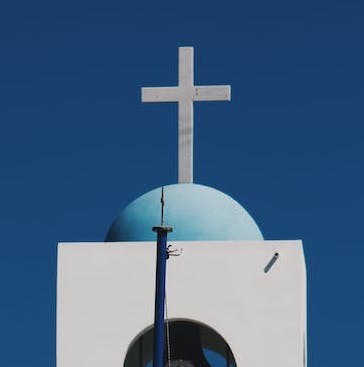The ethereal sound of Gregorian chant has captivated listeners for centuries, transporting them to a sacred space where time seems to stand still. As the Christmas season approaches, these ancient melodies take on an even more profound meaning, evoking a sense of wonder and awe as we celebrate the birth of Jesus Christ.
In this article, we will explore the fascinating world of Gregorian Christmas chants, delving into their origins, their role in the liturgy, and some of the most beloved and enchanting pieces that have resonated with generations of worshippers. Join us on this mesmerizing journey through time, as we uncover the beauty, depth, and enduring appeal of these timeless melodies.

Table of Contents
The Role of Pope Gregory I
The roots of Gregorian chant can be traced back to the early Christian church, with the most significant development occurring during the reign of Pope Gregory I (590-604). This style of music is named in his honor due to his many contributions to liturgical music, though the chants themselves predate his time. Pope Gregory I is credited with organizing the vast body of chants, developing notation, and promoting the use of chant in the liturgy.
Musical Characteristics of Gregorian Chant
Gregorian chant is characterized by its monophonic texture, which means it consists of a single melodic line without harmony or accompaniment. The chants are usually sung by choirs of men and boys in unison, with the melody often moving in a stepwise motion. The rhythm of Gregorian chant is fluid and flexible, adapting to the natural flow of the Latin text.
Gregorian Chant in the Liturgy
The Divine Office
The Divine Office, also known as the Liturgy of the Hours, is a daily cycle of prayers and hymns recited by monks, nuns, and clergy throughout the day. Gregorian chant plays a prominent role in the Divine Office, with various antiphons, responsories, and hymns being sung to enhance the liturgical experience.
The Mass
Gregorian chant is an integral part of the Roman Catholic Mass, which is divided into two main parts: the Proper and the Ordinary.
The Proper
The Proper consists of texts that change according to the liturgical calendar, such as the Introit, Gradual, Alleluia, Offertory, and Communion. These chants reflect the theme of the particular feast or season and are sung by a choir or a soloist.
The Ordinary
The Ordinary includes the texts that remain the same for most Masses, such as the Kyrie, Gloria, Credo, Sanctus, and Agnus Dei. These chants are typically more familiar to the congregation and are often sung by both the choir and the congregation.
Christmas Chants in Gregorian Chant
The Advent Season
The period of Advent begins four weeks before Christmas and serves as a time of preparation for the celebration of Christ’s birth. Gregorian chants during this season focus on themes of longing, hope, and anticipation, with the “O” antiphons being particularly notable examples.
The Christmas Season
The Season is a joyous time in the liturgical calendar, with Gregorian chant playing a significant role in the various Masses and celebrations that take place. There are three main Masses on Christmas Day, each with its unique selection of chants: the Midnight Mass, the Dawn Mass, and the Day Mass.
The Midnight Mass
The Midnight Mass, or “Missa in Nocte,” celebrates the birth of Christ at midnight. This Mass features some of the most well-known Gregorian Christmas chants, such as “Dominus Dixit” (The Lord Said) for the Introit and “Laetentur Caeli” (Let the Heavens Rejoice) for the Offertory.
The Dawn Mass
The Dawn Mass, or “Missa in Aurora,” commemorates the announcement of Christ’s birth to the shepherds. The chants for this Mass include “Lux Fulgebit” (Light Will Shine) for the Introit and “Benedictus Dominus Deus” (Blessed is the Lord God) for the Gradual.
The Day Mass
The Day Mass, or “Missa in Die,” focuses on the eternal nature of Christ’s birth. The chants for this Mass feature “Puer Natus Est” (A Child is Born) for the Introit and “Viderunt Omnes” (All Have Seen) for the Gradual.
Popular Gregorian Christmas Chants
“O Come, O Come Emmanuel”
“O Come, O Come Emmanuel” is a popular Advent hymn based on the “O” antiphons. Its haunting melody and evocative lyrics capture the essence of the season’s longing for the coming of Christ.
“Veni Creator Spiritus”
“Veni Creator Spiritus” (Come, Creator Spirit) is a hymn traditionally sung during the Christmas season, especially on the Feast of the Circumcision (January 1st). This chant invokes the Holy Spirit’s presence and guidance in the new year.
“Puer Natus Est”
“Puer Natus Est” (A Child is Born) is an enchanting chant sung during the Christmas Day Mass. Its joyful melody and triumphant text celebrate the birth of Christ and the salvation he brings.
Conclusion
Gregorian Christmas chants are an essential part of the liturgical celebration during the Advent and Christmas seasons. These timeless melodies, rooted in centuries of tradition, continue to inspire and uplift those who participate in the sacred liturgy. As we journey through the enchanting world of Gregorian chant, we are reminded of the profound beauty and spiritual depth that these ancient songs possess.
See Related Posts

Gregorian Christmas Chants

Love Spell Chants

Best Softball Chants for U12

AKA Sorority Chants

Argentina Football Chants

Short Chants and Cheers

Alabama Football Chants

Everything to Know About African Chants

